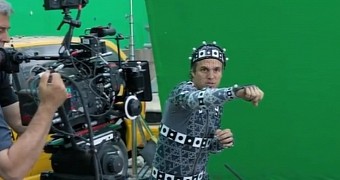Though we're sure some people will secretly disagree, lies are not awesome. Not when told to others, not when told to one's self, and definitely not when being served one portion after another for years or decades.
Polygraphs were invented with the express purpose of detecting falsehood in peoples' statements / answers to questions.
They read physiological indices, specifically blood pressure, pulse, respiration, and skin conductivity, while the subject is asked and answers a series of questions.
The results aren't always conclusive or accurate though, and secret agents are trained to fool such interrogation techniques, as are many special forces soldiers. Sometimes, even random criminals will be able to fool the polygraph for whatever reason.
That's why other means of detecting falsehood are under development. Because when even the most skilled examiners can only spot a lie 60% of the time when assisted by the polygraph, you need something better.
The lie-detection suit
Dutch and British scientists have come together, from the University of Cambridge and Lancaster University in the U.K., and the universities of Utrecht and Enschede in the Netherlands.
Their invention is pretty odd in the way it chooses to detect falsehood. The goal is to read lies in joint twitches... but the “device” is a full body suit.
The full body motion capture suit records the position, velocity and orientation of 23 points on the subject's body, enhancing the clarity of the “deception signal.”
These are the same suits that were used to create animations for various movies and games. Talk about repurposing.
During tests, half of the 90 volunteers were told to lie. The body suit recorded that the sum of joint displacements showed indication of lies in 75% of these cases. Guilty people fidget more, in the words of Ross Anderson, professor of Security Engineering at Cambridge University.
Individual limb data can help improve the indicator level to 80%, especially if the interrogator is good at their job.
Where do things go from here
The scientists intend to redevelop the method for low-cost commodity hardware and test it in a variety of environments to get a better handle at lie detection. Either way, we can be pretty sure that polygraphs will be steadily phased out in favor of these suits. Not by the end of 2015 perhaps, but not after too long a time either.

 14 DAY TRIAL //
14 DAY TRIAL //